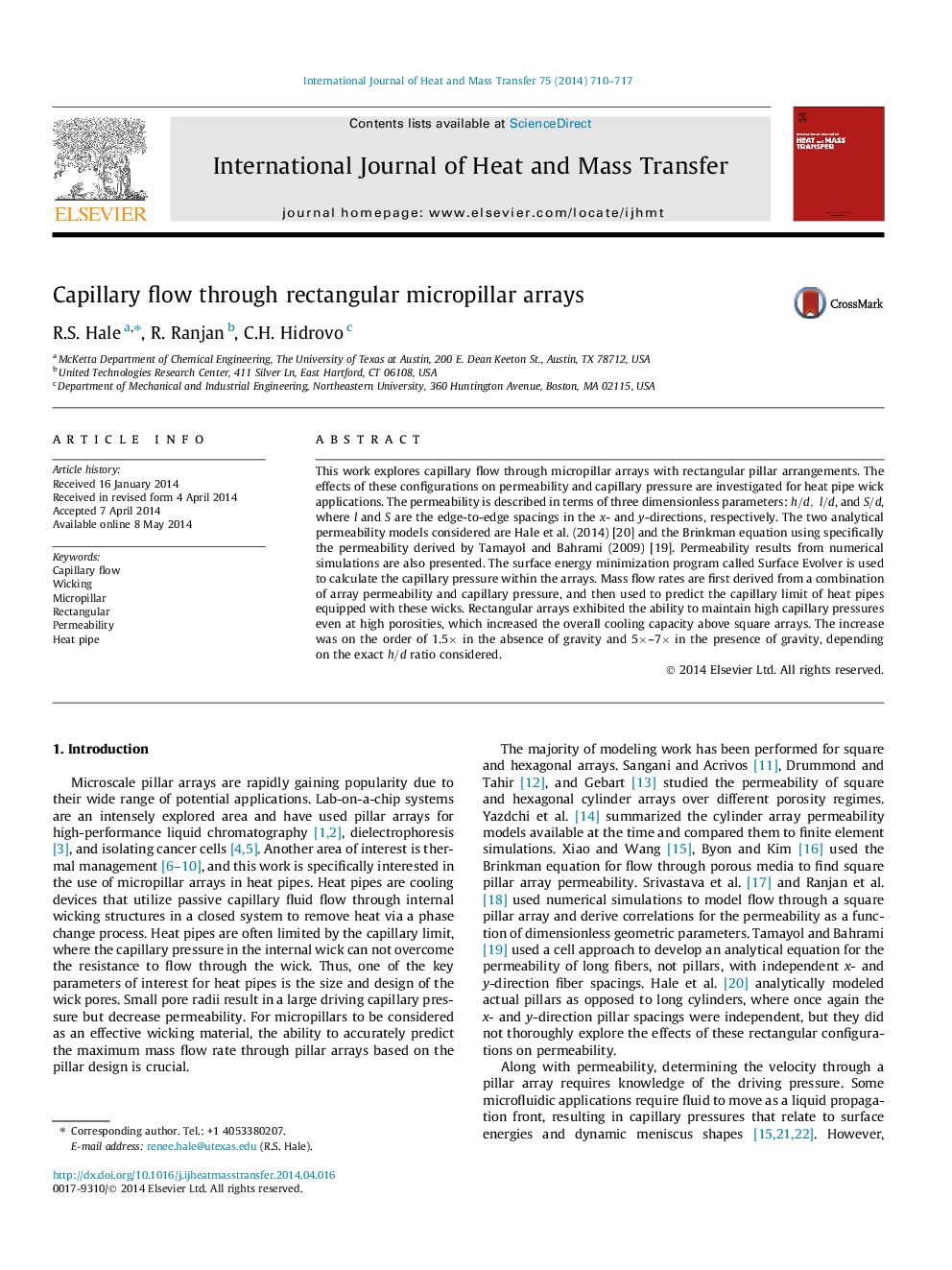| Article ID | Journal | Published Year | Pages | File Type |
|---|---|---|---|---|
| 7057141 | International Journal of Heat and Mass Transfer | 2014 | 8 Pages |
Abstract
This work explores capillary flow through micropillar arrays with rectangular pillar arrangements. The effects of these configurations on permeability and capillary pressure are investigated for heat pipe wick applications. The permeability is described in terms of three dimensionless parameters: h/d,l/d, and S/d, where l and S are the edge-to-edge spacings in the x- and y-directions, respectively. The two analytical permeability models considered are Hale et al. (2014) [20] and the Brinkman equation using specifically the permeability derived by Tamayol and Bahrami (2009) [19]. Permeability results from numerical simulations are also presented. The surface energy minimization program called Surface Evolver is used to calculate the capillary pressure within the arrays. Mass flow rates are first derived from a combination of array permeability and capillary pressure, and then used to predict the capillary limit of heat pipes equipped with these wicks. Rectangular arrays exhibited the ability to maintain high capillary pressures even at high porosities, which increased the overall cooling capacity above square arrays. The increase was on the order of 1.5Ã in the absence of gravity and 5Ã-7Ã in the presence of gravity, depending on the exact h/d ratio considered.
Related Topics
Physical Sciences and Engineering
Chemical Engineering
Fluid Flow and Transfer Processes
Authors
R.S. Hale, R. Ranjan, C.H. Hidrovo,
